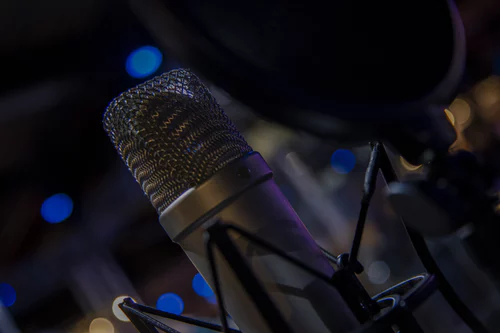A bass guitar is one of the most important instruments for a band. Of course, it may be of greater importance for certain musical genres but it is still a very understated instrument that does not always get its due.
There are a few different types of bass guitars and have different features to offer. The following article will take you through them. There are also different components of a bass guitar you should be familiar with, which have been elaborated upon in the following sections.
Interested in guitars instead? Check out our beginner’s guide to buying a guitar!
So let’s get started with the basics:
Acoustic Bass Guitar Vs Electric Bass Guitar
When you are out in the market for a bass guitar, there is often a question of whether you should pick an acoustic bass guitar or an electric bass guitar. While both are bass guitars, there are some crucial differences that decide which one you should go for. The following is a comparison between an acoustic bass guitar and electric bass guitar:
Amplifier
The use of an amplifier is one of the most crucial differences between an acoustic bass guitar and an electric bass guitar. The following is the relationship between an acoustic bass guitar and an amplifier:
- An acoustic bass does not need an amplifier to be played.
- The amplification in the guitar comes from the soundhole which allows the sound to resonate within the tonewood structure and vibrate on the surface of the sounding board.
- You can simply pick up the guitar and start strumming it.
Meanwhile, here is how an electric guitar and an amplifier are linked:
- The sound of an electric bass guitar emanates from an external amplifier.
- It can be used for large-scale stage performances, whereas an acoustic bass guitar may lack in amplification.
- It does come with the added baggage of always requiring the amplifier in order to be played.
Sound
The sound or the tone produced by both the guitars are quite different. Sure, the sound and tonal quality do depend a lot on the tonewood or the types of wood used in the guitar. But in an electric guitar, the electronics do play a huge part in distorting or regulating how the guitar sounds.
The following are some points to be noted about the sound of both the guitars:
- The electric bass guitar tends to have a deeper sound, perhaps because of the amplification.
- The acoustic bass guitar has a more single dimension sound.
- An electric bass guitar can have its sound modulated and distorted thanks to the amplifier.
- The acoustic bass guitar plays softer tones but the sound cannot be changed to a large extent. You cannot add effects on the sound.
- The electric bass guitar can still not recreate the sound of an acoustic bass guitar, despite all the effects.
Ease of Use
Most guitar players complain of wrist pain. The thick body of the guitar sometimes puts more pressure on the wrist when you are strumming. This is an even greater issue with an acoustic bass guitar because the body of an acoustic guitar is thicker than an electric guitar. This is a problem that is aggravated over a period of time so if you have weak wrists, you may want to put in the work to exercise and make your muscles stronger so you do not end up injuring yourself while playing.
Apart from that, an acoustic bass guitar is surely easier to use than an electric bass guitar as the former does not require you to carry an amplifier around. It can be played on its own though it may not be suitable for every occasion.
Versatility
An electric bass guitar is certainly the more versatile of the two for the following reasons:
- The amplifier allows you to distort the sound and add effects in an electric guitar.
- The EQ shifts in an acoustic guitar are less significant so a change in styles will reflect less vividly, giving it a more one-dimensional tone.
- There are no pickups in an acoustic guitar where you can place your thumbs, again, making the sound less open to versatility.
Parts of a Bass Guitar
There are several elements that come together to create the perfect bass guitar. All of these elements are important to get the right kind of bass sound. The following are some of the most crucial parts of a bass guitar that you need to be acquainted with:
Truss Rod
The truss rod is located underneath the strings, behind the nut that holds the strings together. It is often referred to as the spine or the backbone of the guitar because it goes through the length of the guitar and relieves the tension on the neck when required. When you tighten the truss rod it gives the neck more tension and when you loosen it, the tension on the neck is relieved.
Nut
The nut holds the strings in place. There are designated slots in the nut which have been designed for specific string gauges. It can withstand any amount of pressure on the string up till that limit. If the tension on the string goes beyond the string gauge, the nut will require repair.
Head and Tuning Pegs
After the truss rod, the headstock is one of the most important components of the guitar. The strings are tethered to tuning pegs on the headstock (the head of the guitar). This is one of the most vulnerable parts of the guitar as damage to the head means the whole guitar is damaged. The headstock allows the strings to be spaced out as the tuning pegs are placed one above the other, allowing equal space for all the strings. It is from here that you can tune your guitar.
The size of the headstock does not matter as much as the distance between the strings. If the strings are placed too close together, the nut at the bottom will begin to feel the tension as the strings will have to bend at extreme angles. The mathematics of this portion of the guitar is essential.
Bridge
The bridge is at the opposite end of the headstock. It is situated at the bottom of the guitar where the other end of the strings are tethered. It maintains the strings’ distance and the strings’ height.
Fretboard
The fretboard is housed on the neck of the guitar. The neck is divided into frets or demarcations which tell you where to place your finger on a string. By placing your finger on different frets, you can get different sounds from the same string. But apart from indicating where the notes need to be played, the frets also make it more comfortable to play the guitar as it breaks up the hardness of the wood.
Knobs And Switches
There are two pots in the guitar that look like knobs and switches. One is the volume pot and the other is the tone pot and both are responsible for exactly the things they are named after. They adjust the volume and the tone of the sound.
The pots are also accompanied by a toggle switch which allows you to go back and forth between your pickups. The pickups are magnets that are able to attract the frequencies emitted by the vibration of the strings. The frequency is then sent the cables and finally into a preamp in the amplifier.
Cable Jack Termination Point
The cable jack termination point is the point at which the amp jack meets all the electronics of the guitar. The knobs, switches, pickups, etc., are all connected through wires which are combined together in a chain. The chain meets the amp jack and when the guitar is plugged into the amplifier, the jack is able to transfer the waves and frequencies to the preamp in the amplifier.
Bass Amps vs Guitar Amps
There is a difference between the amplifier you would use for a regular guitar and one you would use for a bass guitar.
In the case of an electric guitar, the amplifier is extremely sophisticated:
- It is able to provide a robust musical distortion to the tone.
- You are able to put effects like reverb through the amplifier and are able to control the shape of the guitar’s tone.
An acoustic guitar amplifier is meant to reproduce the sound of the guitar faithfully:
- The whole range of the guitar’s sound is reproduced through the amplifier.
- This amp avoids any kind of distortion and stays true to the sound of the guitar.
- These amplifiers typically are combination amps and have their own set of speakers in the same cabinet as the amp.
- There is also a larger bass driver and smaller high-frequency tweeters.
But when it comes to bass amplifiers, things change to a certain extent:
- They are not as concerned with effects like distortion.
- A bass amplifier will focus on replicating the low tones of the bass strings.
- They tend to produce more power and are meant to drive larger speakers to be able to emit the low sounds more accurately.
Often, guitarists have an electric as well as a bass guitar but do not want to spend more money on buying another amplifier for the bass. You can certainly use a guitar amplifier for your bass guitar but the sound may be compromised
An electric guitar amplifier will try to distort the sound, while an acoustic guitar bass might filter out the really low sounds, making your bass sound tinny.
The best companion for a bass guitar is an amplifier that has been designed specially to elevate its sound.
Types of Amps
The following are some of the common types of amps for a bass guitar. The technology is similar to a regular guitar but the execution may differ:
Combo vs Head
A combo amp is a frequently used amplifier for rehearsals, studio recordings and performances in smaller, more intimate venues. The combo amp has a preamplifier, a power amplifier, tone controls as well as one or more speakers in the same cabinet. These amps are easier to use and transport as all the components are fit into the same unit. This is why it is a hit among smaller bands.
A head or an amp head, on the other hand, is a type of amp where there is a standalone amplifier which sends the amplified signal through a cable to speakers that are situated outside the cabinet. This is appropriate for larger performances as the speakers that are separate from the unit are able to drive more power.
Practice Amps
Practice amps are the smallest amps for basses and are typically used only on a small scale for purposes of practicing. They do not have too much power, perhaps only 10 to 20 watts, which allows them to provide enough amplification for individual practice sessions. They are ideal for beginners as they do not produce enough power for actual use in band practice or by professionals.
Bass Stacks
Bass stacks are used for really large venues, like stadiums and music festivals. Bass players require more powerful amplification at such venues so one or more separate speaker cabinets are used. These events require 200 to 300 watts more power than regular amplifier configurations. When a separate amplifier cabinet and a separate speaker cabinet is used at such a scale, it is referred to as a “bass stack” in street parlance.
Final Thoughts
A bass guitar may sound like a very straightforward instrument. You do not need to play as many intricate chords as with a regular guitar, nor do you need to practice your strumming action as much. But a bass guitar adds depth to the overall sound of a melody which would be missing if the bass was not taken care of. The above article lays emphasis on different parts of a bass guitar. The demarcation between an acoustic bass guitar and electric bass guitar and the breakdown of the guitar has been done so you can understand how complex this instrument is and how easy it makes its job sound. Remember, the bassist has one of the most underrated but also one of the most important jobs in the band!










